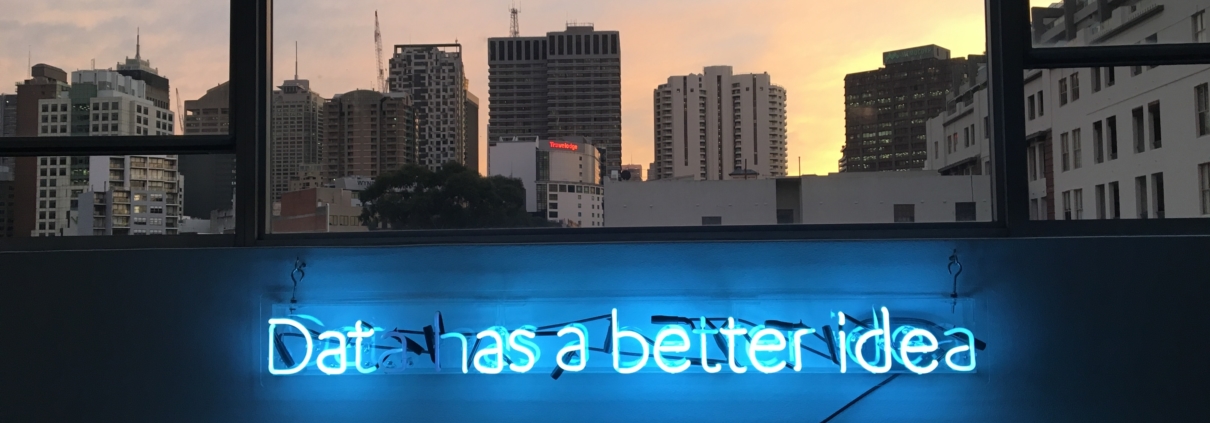How to achieve a real impact using Artificial Intelligence in your Supply Chain Planning
Artificial Intelligence is here for everyone
One of the most popular words in recent years has been Artificial Intelligence (AI). AI has become a mainstream topic and buzzword. It is seen as a solution to complex problems. Its availability and the many positive examples have contributed to this hype. However, the question investigated in this article is: How can AI work and add value in supply chain environments?
Looking at the various use cases for AI, supply chain planning seems at first glance to be a perfect playing field for AI, as supply chain planning typically involves a wide range of very complex problems. The status quo is that many supply chain and operations planners today spend a significant amount of time to manually plan for the future. This is still done based on simple statistics and time-consuming Excel lists trying to find an optimum between competing objectives. For such tasks, AI unfolds its full potential since it improves accuracy and efficiency and maximizes profit margins at the same time.
The highest potential for AI along the Supply Chain is seen in Demand Planning
One of the most promising applications of AI is the demand planning. Let’s walk through the demand planning process of a food/drink manufacturer. The manufacturer’s goal is to have the right products in the right place at the right time. For the customer, this creates the visual impression that a broad product portfolio is available. The operations and supply chain planning processes for food and drink producer are more complex as they often must deal with shelf life. Shelf life makes the planning process more complex, as the challenge is to have the right inventory available. Overproduction would lead to losses for fresh products such as fruits and vegetables, i.e., poor demand planning results in large amounts of waste.
Therefore, accurate demand planning helps to increase the availability and sales while reducing food waste. Customer demand and buying behaviour are subject to many factors such as weather, promotions, special events or holidays. These external factors are often not properly considered, especially with simple statistical methods in Excel. If we look at the daily tasks of a demand planning engine for food and beverage manufacturers, we can see that they use historical sales data to predict future demand. Take a fresh smoothie, for example. Here, the shelf life for the various distribution channels is limited and customer demand is heavily influenced by weather and promotions. Demand planning based only on historical sales data would therefore be misleading. In practice, this situation is often handled by manually changing the proposed orders based on the operation manager´s experience. This is time consuming, error prone and not scalable. And what does the company do when this key employee quits his or her job?
Excel is not a sophisticated demand planning software!
Imagine a technology that can learn the operation manager´s experience – a technology that filters the most important factors influencing the demand. Artificial intelligence is the answer. Neural networks (NNs), for example, can learn consumer behaviour over time. Before such technology is used in production, the system is trained with large data sets from previous weeks, months and years. The more, the better. The technology can use an observed correlation of input factors to create a demand forecast for the days and weeks ahead. Going back to our smoothie example: An NN would understand that smoothies are purchased on sunny days, holidays, and sporting events. Thus, using just this data can increase predictive accuracy and optimize replenishment decisions for that product.
Demand Planning software helps to replenish the right amount while reducing the inventory levels
When it comes to replenishment, there are other opportunities where AI can play a critical role. The first point is around safety levels. When it comes to safety levels, the status quo is that a replenishment order is triggered when the company’s stock levels reach a predefined safety level. But who ensures that this predefined safety level or reordering policy is the optimal decision? Wouldn’t it be better to have a dynamically adjusting safety level based on the accurate demand forecasts?
The second issue is lead time. Currently, lead times vary from time to time when an order is placed by the manufacturing side. It is rare that the lead time promised by manufacturers matches the actual lead time. Why is this the case? Because external factors such as weather, bottlenecks in global resources, distributor reliability and many other factors play a role. To remain competitive, reliable prediction of estimated time of arrival is critical for efficient production operations. AI can help learn complex logistical environments based on, for example, past shipments, ship owner reliability, weather conditions, and many other factors. This information can then be used in an integrated planning system to evaluate alternative routings. The foundation for this is the quality of the master data. Master data is often not updated for years while suppliers have changed or improved their processes, reducing the lead time for re-procurement. Having the right master data is the most crucial element for being able to plan accurately. This typically accounts for 90% of the work of AI projects.
Requirements for a successful demand planning department
To run a successful AI-driven supply chain department, a few key roles or key people are required. The first person is a market expert who has in-depth knowledge of supply chain management and the market in which the company operates. His or her role involves providing all market and customer-related inputs, such as the impact of promotions and new outlets, which are then integrated into the demand planning process.
The second key role is seen in a demand planning data scientist. He or she combines internal and external data input and evaluates it using AI. The skills required for this role include in-depth knowledge of a variety of machine learning techniques and a good knowledge of statistical computer language programming, as well as skills querying databases.
Finally, the team should be rounded out by a demand planning manager who sets demand planning segmentation and handles exceptions where human input and validation is required, such as when a new product is launched or reaches end-of-life. Such a hybrid team in which humans combine their strengths with those of Artificial Intelligence will lead to an enormous increase in performance and lay the foundation for successful AI-driven demand planning.
The requirements to operate successfully in the supply chain will change fundamentally. A transformation in the workforce is required as workers need new skills and must constantly learn and adapt to evolving industries. The key question in terms of skills is whether to build them internally, hire them, or hire/externalize the AI skills of the future. We believe that AI-focused skills are a core competency for the supply chain of the future and cannot be successfully externalized. Organizations must first quantify the skills gaps between the current and future state, and then design a portfolio of initiatives to build the target capabilities, such as hiring, retraining, contracting, and operationalizing the initiatives, as well as creating a roadmap and governance to begin rapidly building the target capabilities. In addition, identifying the right use case for AI in the end-to-end planning process is critical. For supply chain planning, this needs to be aligned to core KPIs for cost, service and capital, with a clear rationale for where the AI use case will add value to the business and how it can be scaled across the enterprise. AI has shown tremendous impact on improving out-of-stock situations (and therefore revenue), inventory optimization, and increasing utilization.
Why Predictwiser.Cloud is the right demand planning software for your company
But what makes our Predictwiser.Cloud software so special in the context just described and distinguishes us from other software providers? While other providers support operations teams of companies in their planning activities, Optiwiser A.I. Solutions takes the approach of completely replacing and automatically executing all planning tasks performed by an operations management team in terms of demand forecasting. We enable our customers to focus on their day-to-day business while our software automatically processes all available data and forecasts the ideal demand and inventory levels. Our customers will always make the right decision on how much to order at what time, eliminating stock-out situations and minimizing waste. This has a positive impact on the entire supply chain of our clients and helps their suppliers to plan better and provides their customers an overall better experience. We not only digitize the operations team of our customers, but also enable full automation of all demand planning processes. In addition, you don’t need any experience in data science, Artificial Intelligence and Supply Chain Planning, everything will be covered by our tool and thus you also save tremendous expenses you would have to spend on experienced specialists in this field to accurately plan your demand.



